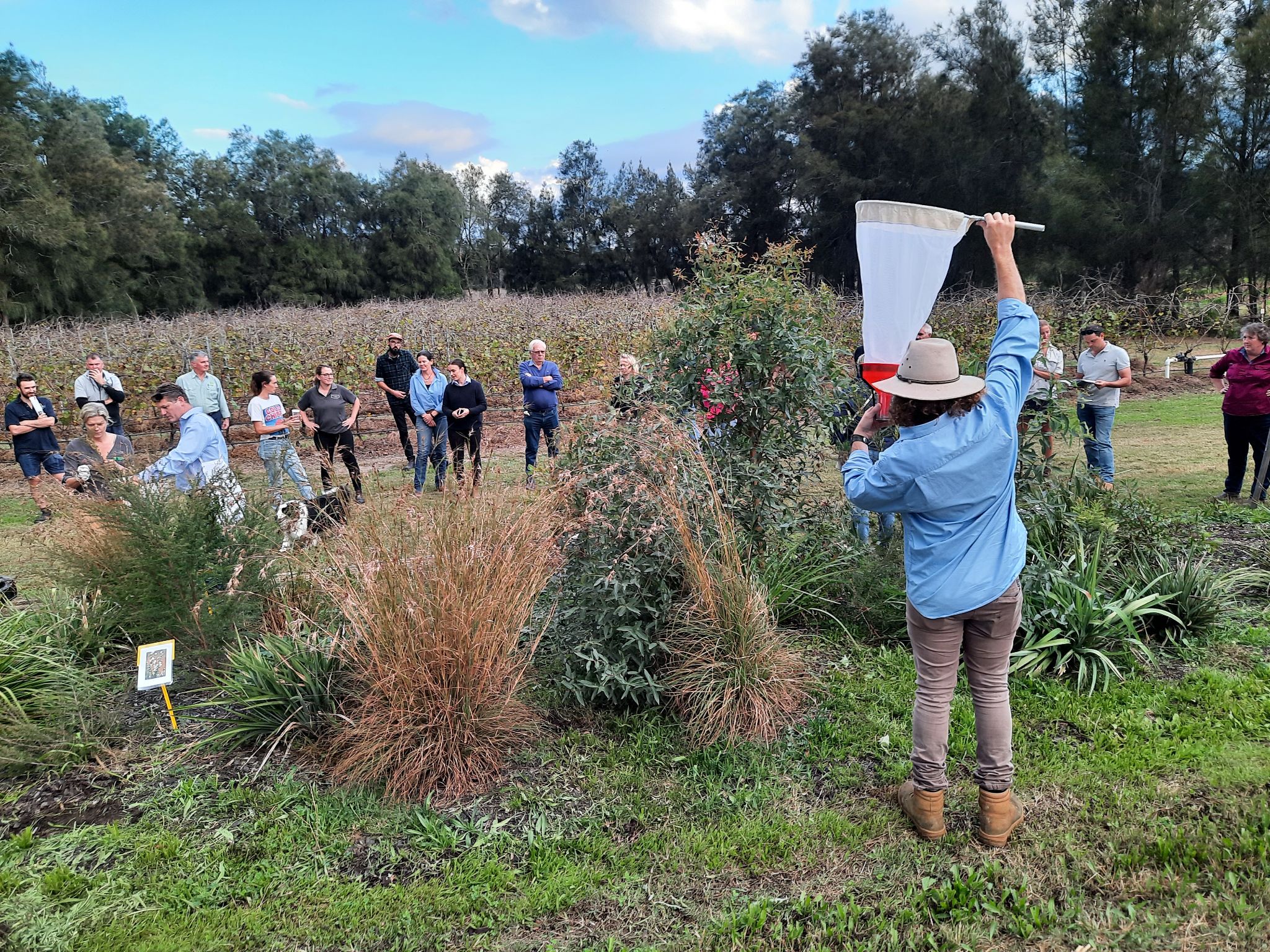Wine Australia Regional Program Biodiversity Workshop Hunter Valley
I attended this event (HRLN sponsored) recently and was encouraged to learn about the scientific findings supporting the case for native biodiversity in the wine growing industry – and less chemical use.
Mary Retallack, PhD from the University of Adelaide and Retallack Viticulture discussed findings from her South Australian Trials with planting native insectary plants as a means of conservation biological control in vineyards. We also took a look at a plot established in 2019 as part of a new trial at Tulloch Wines with Darren Fahey; NSW DPI Development Officer and had a chance to use the nets to capture some insects.
After only a couple of shakes of the lomandra and tea tree shrub into the net, I caught a few insects- the easiest to identify were the preying mantis and ladybugs.
Preliminary information and data on this trial is available at https://www.dpi.nsw.gov.au/__data/assets/pdf_file/0006/1245057/Grapevine-management-guide-2020.pdf
Key messages that were shared:
• Insectary plants provide ‘SNAP’, an acronym that refers to shelter, nectar, alternative prey/hosts and pollen which is needed to nourish predatory arthropods and parasitoids and enhance their presence in vineyards. In turn, they provide free biological control of pests.
• Native plants are naturally adapted to Australia’s dry climate and are consistently reported as having a low occurrence of pests and high occurrence of natural enemies.
• The majority of predators that attack crop pests are native species and an increase in predators is reported where there are stands of native vegetation adjacent to crops.
• It is anticipated that biological pest control can be enhanced in vineyards by planting native insectary plants, which would reduce insecticide inputs, and enhance biodiversity and resilience.
To view Dr Mary Retallack’s complete presentation, click here.



